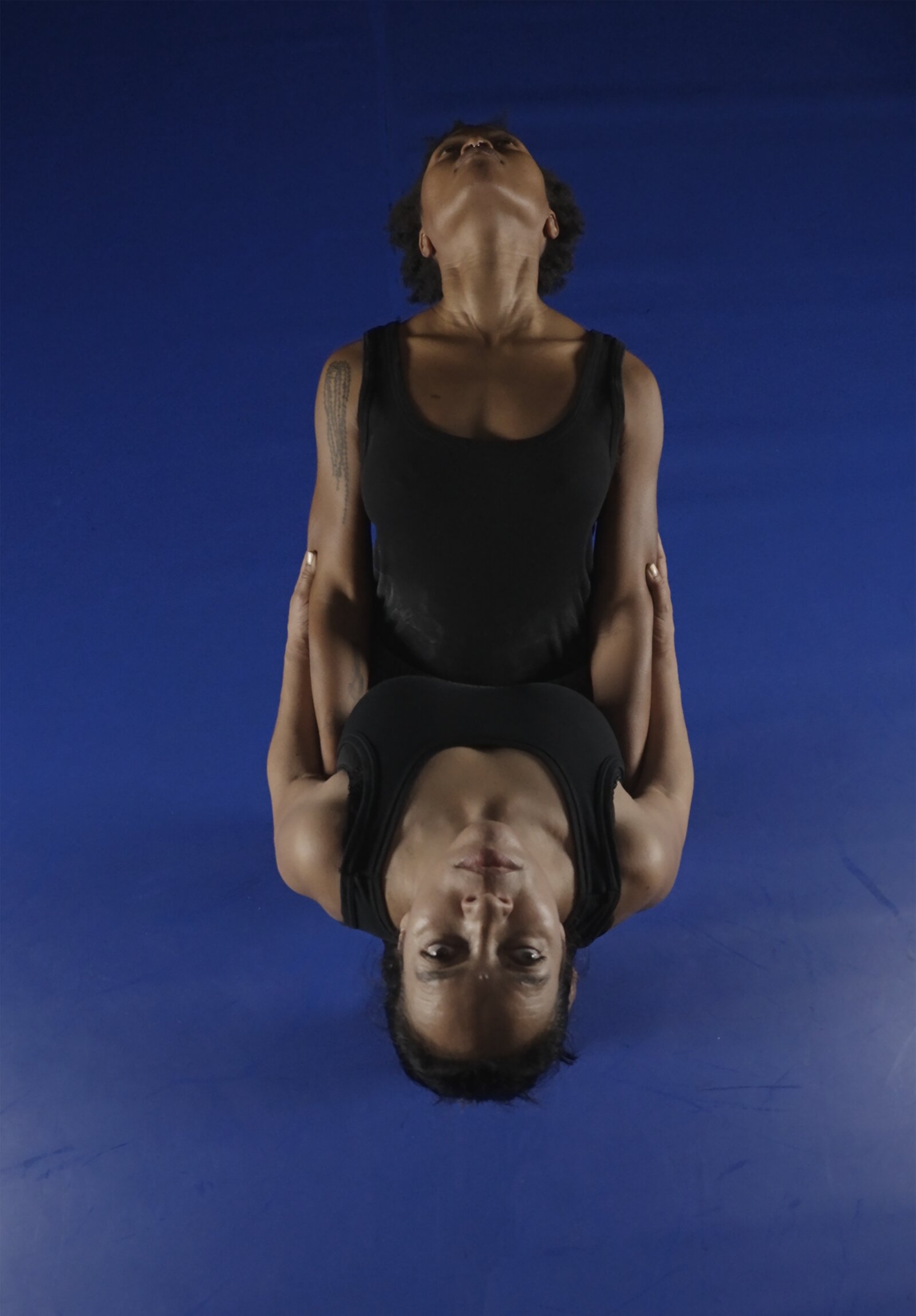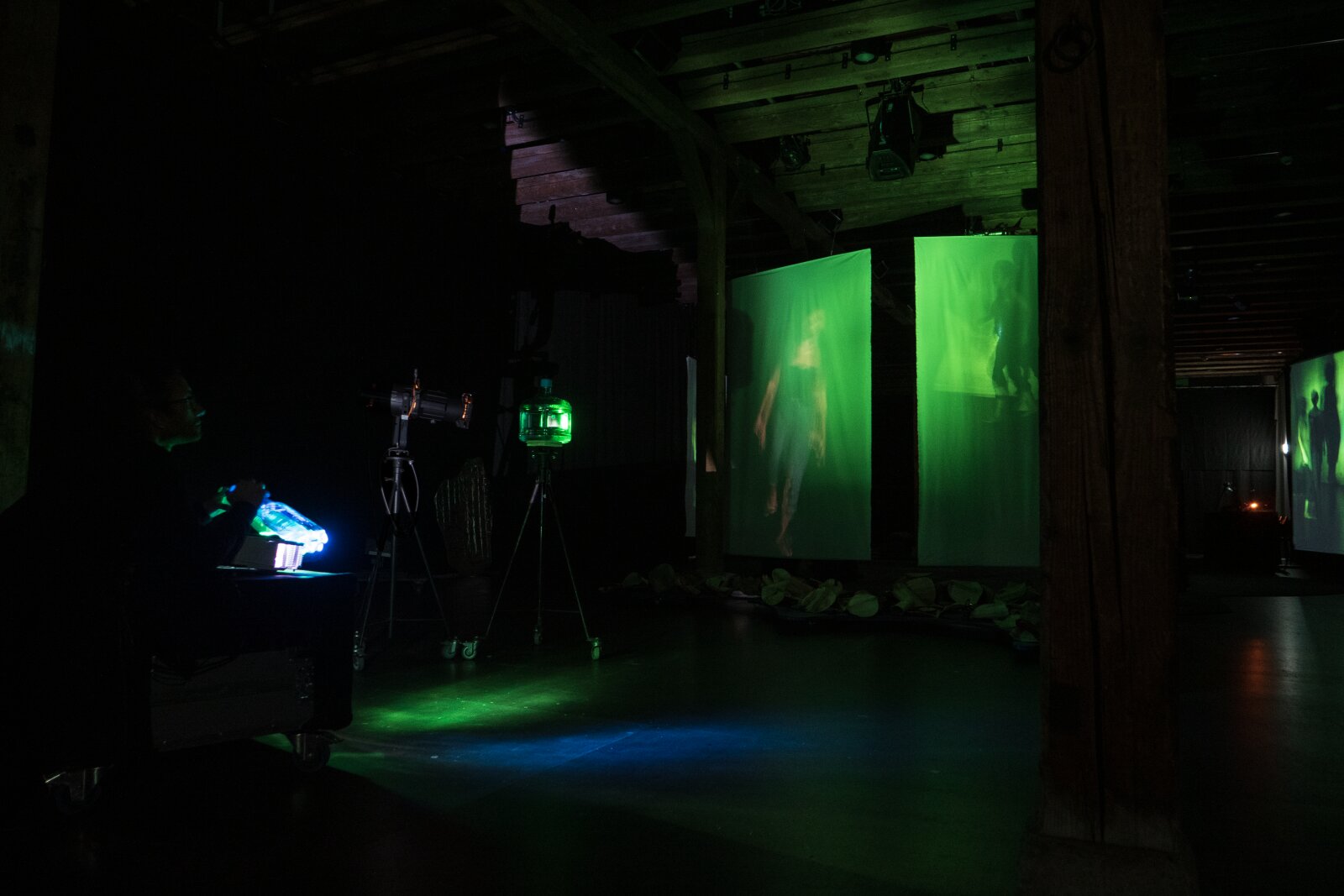Can we imagine living in one of the many places in the world that are underwater due to rising sea levels caused by global warming?
Technotropies of the otherwise takes as its starting point the Sundarbans mangrove forest in the Bay of Bengal, which extends over large parts of Bangladesh and India. According to climate forecasts, it will be completely flooded in near future. Today already, as a result, thousands of people are forced to migrate. Sundarban’s plants and animals are well adapted to its marine environment and can breathe underwater. But what about humans? Can humankind imagine to migrate in the future into the Ocean?
The audience, that is placed at the middle of the space, is surrounded by a four channel performance video with moving light objects and an immersive musical experience. For the ocean to take us into every movement, head and body grow together and swallowing and breathing become one. We will find ourselves in a surging, breathing, rhythmic forest, where frequencies from an aquatic future reach us.
There will be a s/tabel talk after the show of the 1th of April. This is an invitation to conversations with the artists in Stall 6. Over a drink at the table, informally and without moderation, there is the opportunity to chat, exchange ideas and toast each other.
Can we imagine living in one of the many places in the world that are underwater due to rising sea levels caused by global warming?
Technotropies of the otherwise takes as its starting point the Sundarbans mangrove forest in the Bay of Bengal, which extends over large parts of Bangladesh and India. According to climate forecasts, it will be completely flooded in near future. Today already, as a result, thousands of people are forced to migrate. Sundarban’s plants and animals are well adapted to its marine environment and can breathe underwater. But what about humans? Can humankind imagine to migrate in the future into the Ocean?
The audience, that is placed at the middle of the space, is surrounded by a four channel performance video with moving light objects and an immersive musical experience. For the ocean to take us into every movement, head and body grow together and swallowing and breathing become one. We will find ourselves in a surging, breathing, rhythmic forest, where frequencies from an aquatic future reach us.
There will be a s/tabel talk after the show of the 1th of April. This is an invitation to conversations with the artists in Stall 6. Over a drink at the table, informally and without moderation, there is the opportunity to chat, exchange ideas and toast each other.
| Concept, Installation | Samrat Banerjee, Stefanie Knobel |
| Choreography, Video direction, Editing | Stefanie Knobel |
| Performance and Co-Choreography | Uma Banerjee, Samrat Banerjee, Carisa Bledsoe, Malika Khatir, Shatakshi Nandy |
| Music | André Veigas Pereira |
| Text | Samrat Banerjee |
| Light | Samrat Banerjee, Kai Simon Stoeger |
| Choreographic Assistance | Kai Simon Stoeger |
| Sound mixing | Kevin Andrea Furlan |
| Editing Assistenz | Laura Rodríguez |
| Technical direction Zurich recording | Gabriel Studerus |
| Technical assistance | Pina Köhler |
| Camera | Ohida Khandakar, Stefanie Knobel |
| Costume design | Ružica Rajčić |
| Production | Paula Fricke, Stefanie Knobel |
| Interviewees | Krishna Mandal, Kanika Mandal, Sita Sil, Mita Biswas, Manju Mandal |
| … |
| Production | Verein sk*ein |
| Co-production | Gessnerallee Zürich |
| With the support of | Aargauer Kuratorium, Ernst-Göhner Stiftung, Fondation Nestlé pour l’Art, Kanton Zürich, Pro Helvetia Schweizerische Kulturstiftung, Stiftung Corymbo, Schweizerische Interpretenstiftung, Stadt Zürich Kultur, Südkulturfonds |






